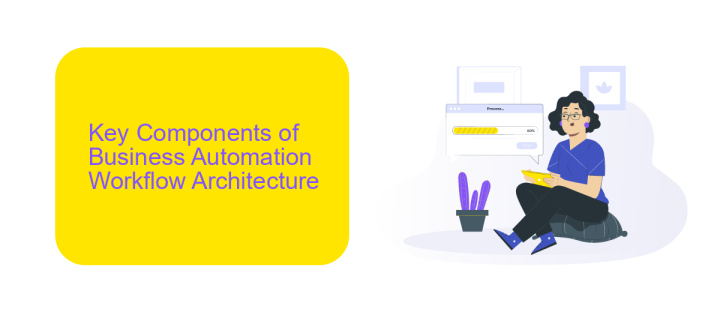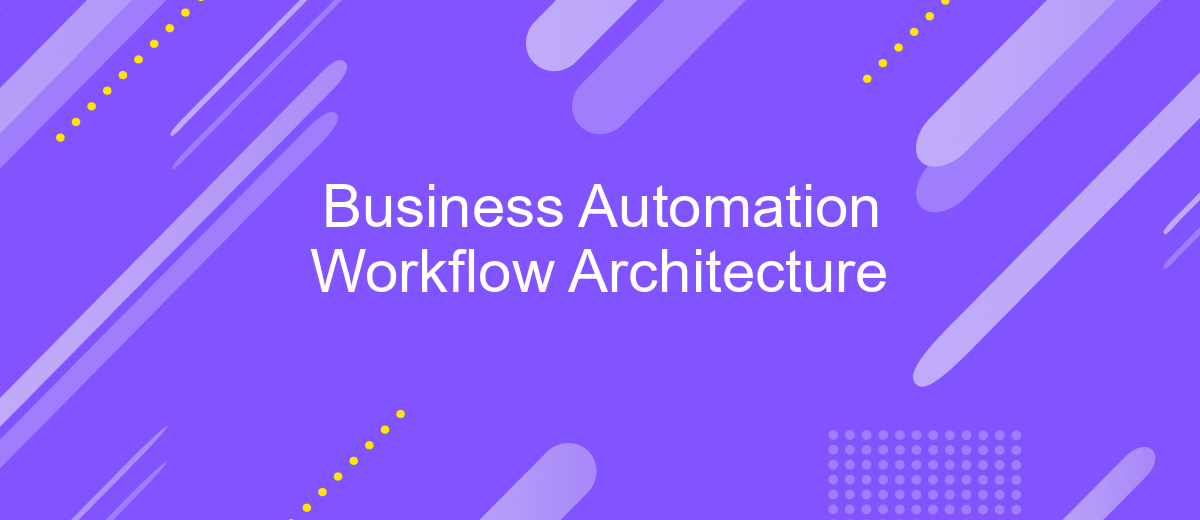Business Automation Workflow Architecture
Business Automation Workflow (BAW) architecture is a critical component in modern enterprises, streamlining operations and enhancing efficiency. By integrating various business processes and automating repetitive tasks, BAW helps organizations achieve greater productivity and agility. This article explores the fundamental elements of BAW architecture, its benefits, and best practices for implementation to optimize business performance.
Introduction
Business Automation Workflow (BAW) architecture is a critical component for modern enterprises aiming to streamline their operations and enhance productivity. BAW integrates various business processes and automates routine tasks, allowing organizations to focus on strategic initiatives. The architecture typically includes components such as workflow engines, business rule management systems, and integration services.
- Workflow Engines: These manage and execute the sequence of tasks in a business process.
- Business Rule Management Systems: These systems define and manage business rules to ensure compliance and consistency.
- Integration Services: Tools like ApiX-Drive facilitate seamless integration between different systems, enhancing data flow and process efficiency.
Implementing a robust BAW architecture can significantly reduce operational costs and improve decision-making. By leveraging integration services like ApiX-Drive, businesses can ensure that their various applications and data sources work in harmony, providing a cohesive and efficient workflow environment. This not only optimizes performance but also enables scalability and adaptability in a rapidly changing business landscape.
Key Components of Business Automation Workflow Architecture

Business Automation Workflow Architecture encompasses several key components that ensure seamless and efficient automation processes. The Workflow Engine is central to this architecture, orchestrating tasks and managing the flow of activities. It integrates with various systems and applications, ensuring that tasks are executed in a timely and orderly manner. The Data Repository stores all the necessary information and documents required for workflow execution, enabling easy access and retrieval of data when needed. Additionally, the User Interface provides an interactive platform for users to monitor and control workflow activities, ensuring transparency and ease of use.
Another crucial component is the Integration Layer, which facilitates communication between different systems and applications within the workflow. Services like ApiX-Drive play a significant role here, offering tools to set up and manage integrations effortlessly. ApiX-Drive allows businesses to connect multiple applications without the need for extensive coding, simplifying the integration process and ensuring data consistency across platforms. Furthermore, the Monitoring and Reporting Tools provide real-time insights into workflow performance, enabling businesses to identify bottlenecks and optimize processes for better efficiency.
Benefits of Business Automation Workflow Architecture

Business Automation Workflow Architecture offers numerous advantages that significantly enhance operational efficiency and streamline business processes. By integrating various systems and automating repetitive tasks, organizations can achieve higher productivity and reduce human error.
- Improved Efficiency: Automation workflows minimize manual intervention, speeding up processes and reducing the time required to complete tasks.
- Cost Reduction: By automating repetitive tasks, businesses can reduce labor costs and allocate resources more effectively.
- Enhanced Accuracy: Automated workflows reduce the risk of human error, ensuring more consistent and reliable outcomes.
- Scalability: Business automation workflows can easily scale to accommodate growing business needs without significant changes to the existing infrastructure.
- Seamless Integration: Tools like ApiX-Drive facilitate the integration of various applications, allowing for a seamless flow of information and better data management.
Incorporating Business Automation Workflow Architecture into your organization not only streamlines operations but also provides a competitive edge by enabling faster response times and improved customer satisfaction. By leveraging advanced tools and technologies, businesses can stay ahead in a rapidly evolving market.
Implementation Considerations

When implementing a Business Automation Workflow (BAW) architecture, it is crucial to consider various factors to ensure a seamless and efficient deployment. One of the primary considerations is the scalability of the architecture, as the system must be able to handle increasing workloads without compromising performance.
Another important aspect is integration with existing systems and services. Utilizing tools like ApiX-Drive can significantly streamline this process by automating data transfers between different platforms, thereby reducing manual effort and minimizing errors.
- Ensure the architecture supports scalability and can handle future growth.
- Utilize integration tools like ApiX-Drive to automate data transfers.
- Implement robust security measures to protect sensitive data.
- Monitor system performance regularly to identify and address bottlenecks.
Lastly, it is essential to provide adequate training for staff to ensure they are proficient in using the new system. By considering these factors, organizations can effectively implement a BAW architecture that enhances productivity and operational efficiency.


Case Studies and Examples
One notable case study involves a large retail company that implemented a Business Automation Workflow (BAW) to streamline its order processing. Prior to BAW, the company faced significant delays and errors due to manual handling of orders. By integrating BAW, they automated the entire process from order placement to delivery, reducing processing time by 60% and errors by 80%. The workflow included automated notifications to customers and real-time tracking, significantly enhancing customer satisfaction.
Another example is a healthcare provider that utilized BAW to improve patient management. The provider used ApiX-Drive to integrate various systems, such as electronic health records (EHR) and appointment scheduling. This integration allowed for seamless data flow, ensuring that patient information was always up-to-date and accessible. As a result, the provider saw a 50% reduction in administrative workload and a 30% improvement in patient appointment adherence. These case studies highlight the transformative potential of BAW in diverse industries.
FAQ
What is Business Automation Workflow (BAW) architecture?
How does BAW architecture enhance business processes?
What are the key components of BAW architecture?
How can businesses integrate BAW architecture with other systems?
What are the benefits of using BAW architecture for workflow automation?
Apix-Drive will help optimize business processes, save you from a lot of routine tasks and unnecessary costs for automation, attracting additional specialists. Try setting up a free test connection with ApiX-Drive and see for yourself. Now you have to think about where to invest the freed time and money!

